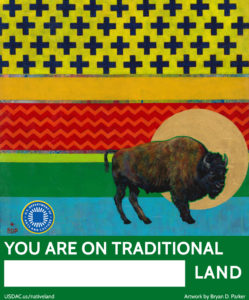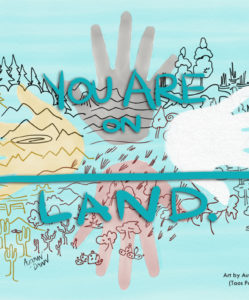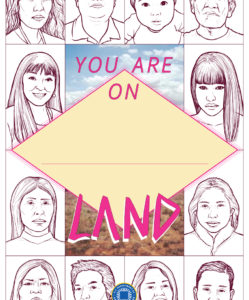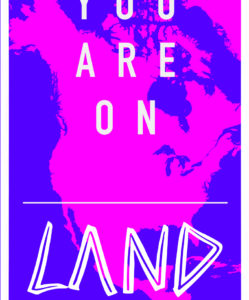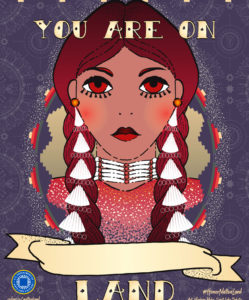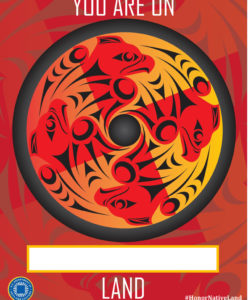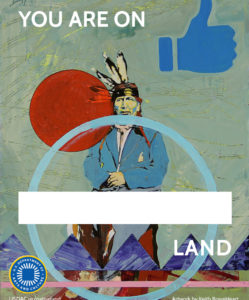As you walk through the hallways of ELPC, you may notice works of art from various indigenous artists that say “You Are On _________ Land.” These are part of the #HonorNativeLand campaign by the U.S. Department of Arts and Culture. Land acknowledgements are very common in other countries such as New Zealand, Australia, and Canada, as well as among tribal nations in the U.S. There’s also policy in some places to open events and gatherings by acknowledging the indigenous inhabitants of that land. For example, ELPC is situated on Lenape, Shawnee, and the Six Nations’ tribal lands.
For centuries, indigenous people have been resilient in the face of genocide, as well as forced relocation and assimilation. From 1778–1871, the U.S. government entered into more than 500 treaties with hundreds of Native American tribes; all of which have been violated in some way by the government. Land acknowledgements honor the original inhabitants, and they expose us—many for the first time—to these people.
One should also remember that these tribes still exist. There are currently 6.9 million Native Americans and Alaska Natives in the U.S., and 573 federally recognized tribes. Today, only 22% of indigenous people live on reservations or other trust lands.
Their’s is a vibrant community and culture doing major things across the country in filmmaking, language revitalization, fashion design, art, politics, engineering, music, environmental protection, and so much more. Let us not just acknowledge indigenous land and people one or two months of the year or around Thanksgiving. Let us acknowledge Indigenous land, people, and all that they are currently doing right here, right now.
Learn more about rewriting the narratives we have been told at illuminatives.org. Download the art you see at ELPC and the guide to practice acknowledgement at usdac.us/nativeland.

